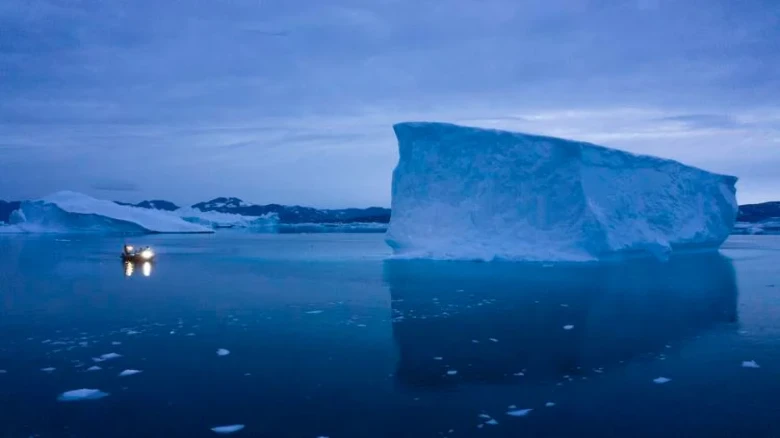Regional

Without replenishment, the climate change-induced melting of the fatal ice will definitely raise sea levels, according to research co-author and glaciologist William Colgan of the Geological Survey of Denmark and Greenland.
color:#111111;letter-spacing:-.75pt;mso-bidi-font-weight:bold">
color:#111111;letter-spacing:-.75pt;mso-bidi-font-weight:bold">Digital Desk: According to a study
released on Monday, the fast melting ice sheet in Greenland will eventually
cause the global sea level to rise by at least 10.6 inches (27 centimetres),
which is more than twice as much as originally predicted.
That is due to something
that might be referred to as zombie ice. That is doomed ice that is no longer
being replenished by parent glaciers that are now receiving less snow, despite
still being tied to thicker sections of ice. Without replenishment, the climate
change-induced melting of the fatal ice will definitely raise sea levels,
according to research co-author and glaciologist William Colgan of the
Geological Survey of Denmark and Greenland.
color:black">"Ice is dead. According to Colgan, it will simply melt and
vanish off the ice sheet. No matter which climate (emissions) scenario we
choose at this time, this ice has been relegated to the ocean.It is "more
like one foot in the grave," according to the study's principal author,
glaciologist Jason Box of the Greenland survey.
The study's estimate of an
inevitable sea level increase of 10 inches is more than twice as great as what
experts had previously predicted would result from the melting of Greenland's
ice sheet. According to a study published in the journal Nature Climate Change,
it might measure up to 30 inches (78 centimeters). In contrast, the
Intergovernmental Panel on Climate Change assessment from last year predicted
that the expected sea level increase due to Greenland ice melt by the year 2100
would range from 2 to 5 inches (6 to 13 cm).
Leave A Comment